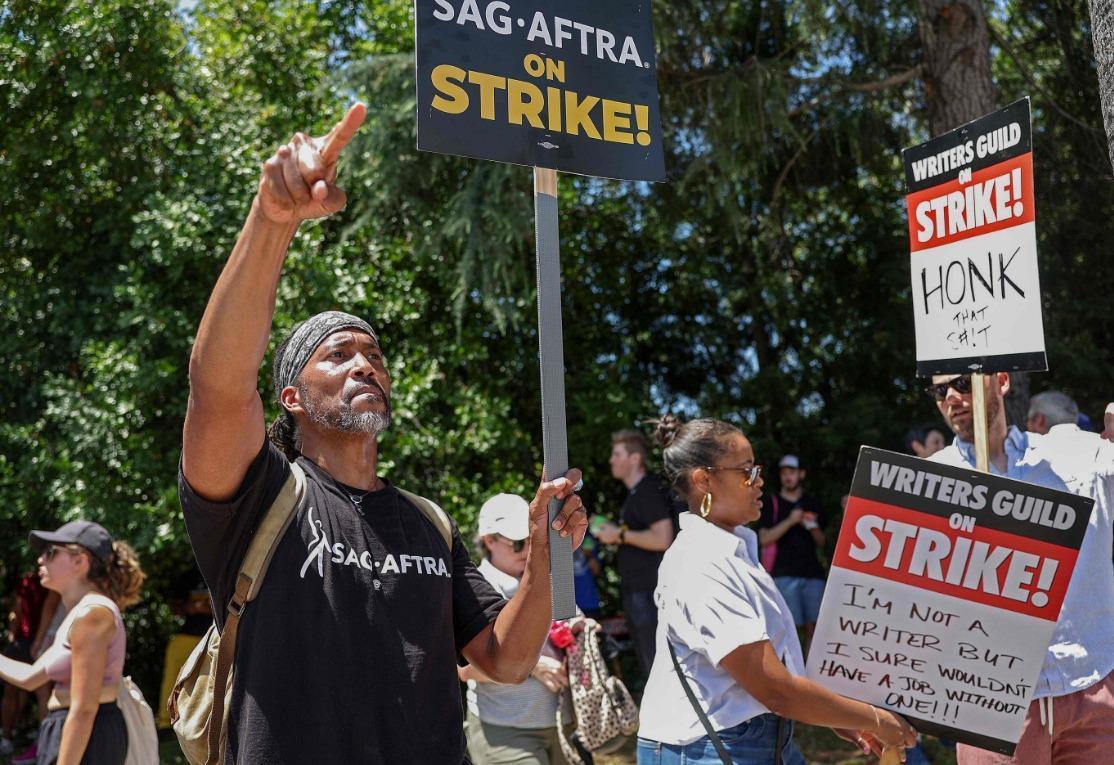Hollywood plunges into all-out war
NEW YORK

Three years after the pandemic brought Hollywood to a standstill, the film and TV industry has again ground to a halt. This time, though, the industry is engaged in a bitter battle over how streaming - after advancing rapidly during the pandemic - has upended the economics of entertainment.
Having weathered plague, Hollywood is now fully at war in its own “Apocalypse Now” double feature. When tens of thousands Screen Actors Guild-American Federation of Television and Radio Artists hit the picket lines last week, joining 11,000 Writers Guild of America screenwriters who have been on strike since May, a smaller clash went nuclear just in time for the release of “Oppenheimer.”
As striking actors and writers mobilized to mob studio lots and streamer headquarters, Puck’s Matthew Belloni wrote, “The town is burning to the ground.”
“You cannot change the business model as much as it has changed and not expect the contract to change, too,” said Fran Drescher, SAG-AFTRA president, in a fiery press conference announcing the strike. “We’re not going to keep doing incremental changes on a contract that no longer honors what is happening right now with this business model that was foisted upon us.
Disaster also loomed in Hollywood when COVID-19 in March 2020 shuttered movie theaters, emptied TV studios and shut down all production. The recovery is still ongoing. Over the weekend, one of the first major film productions shut down by the pandemic — “Mission: Impossible – Dead Reckoning Part One” — only just reached theaters. And as its big-but-not-blockbuster opening showed, some of pre-pandemic Hollywood still just hasn’t returned. Box office remains about 20-25 percent off the pre-pandemic pace.
Though many of the demands of SAG-AFTRA and the WGA are longstanding, much of the current dispute gathered force in the helter-skelter days of the pandemic. A digital land rush to streaming ensued, as studios, in many cases, hurried to craft their Netflix competitors. Subscriber growth became the top priority.
Rahul Telang, a Carnegie Mellon University professor and co-author of the book “Streaming, Sharing, Stealing: Big Data and the Future of Entertainment,” says an entire era of change was condensed into two years.
“What is happening right now was bound to happen. With streaming, the whole business got disrupted,” says Telang. “So naturally, they’re complaining, ‘We need our fair share.’ But how do you decide what’s a fair share? There has to be a transparency about where the money is coming from and where it’s going. Until this gets resolved, this issue will keep coming up.”
The last time screen actors and writers struck simultaneously, in 1960, the guilds established royalty (later residual) payments for replays of films and TV episodes, among other landmark protections. If that strike reckoned with the dawn of television, this one does much the same for the streaming era.
Meanwhile, actors are sharing images of their paltry residual payments for streaming hits. Kimiko Glenn of Netflix’s “Orange Is the New Black” posted a clip of residual payments totaling $27.30.
“You used to be able to work on a broadcast show, one show and you’re good for the year because of the residuals,” said actor Nachayka Vanterpool on the picket lines. “And then you have streaming coming along and you got 20 cent residual checks. That impacts you.”
There are also differences that favor the writers. In 1960, the strike by SAG (whose president was a then-Democrat Ronald Reagan) was fiercely opposed by some other guilds, including the International Alliance of Theatrical Stage Employees (IATSE), which represents below-the-line crew members. This time, the actors and writers have near-universal support throughout the guilds. IATSE, notably, is set to negotiate its own new contract next year.
















